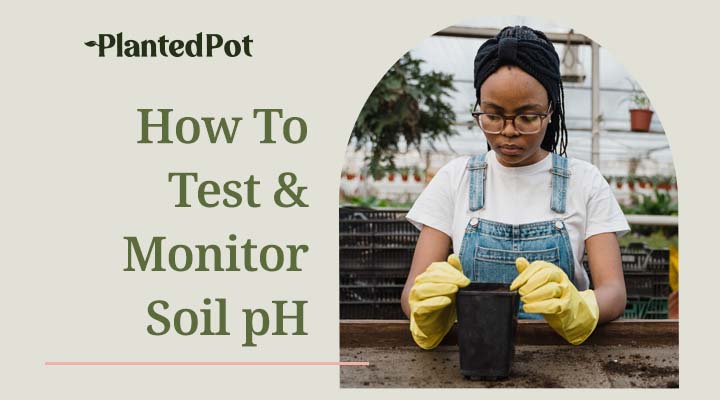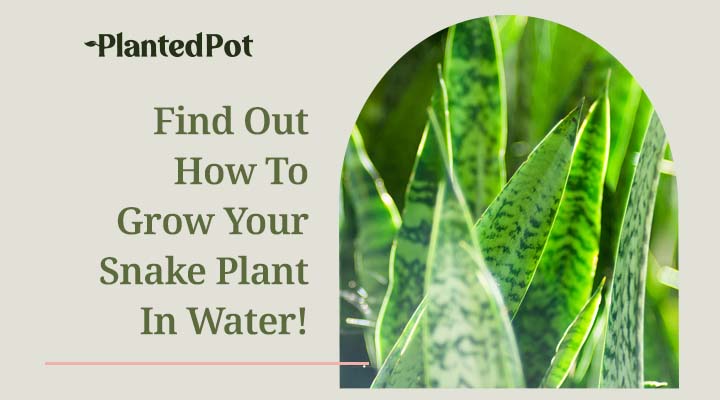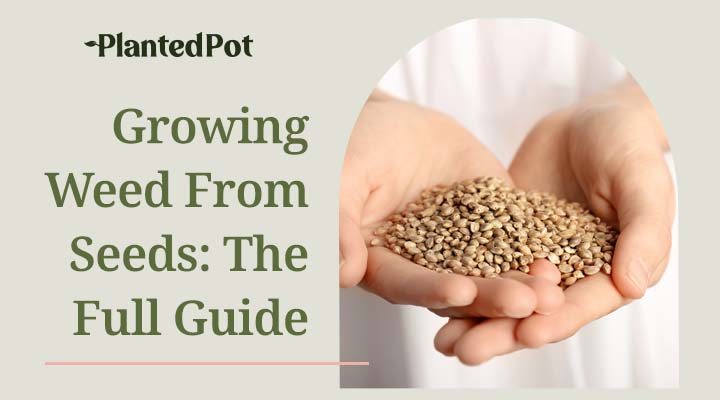
Do Succulents Need Sun? Your Guide To The Perfectly Lit Plant
Home / Do Succulents Need Sun? Your Guide To The Perfectly Lit Plant
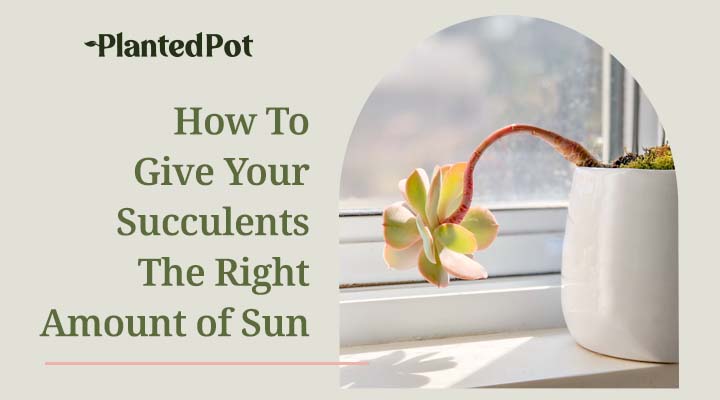
Do Succulents Need Sun? Your Guide To The Perfectly Lit Plant
Succulents are increasingly popular due to their exotic, vibrant appearance and ease of growing successfully. Succulents need minimal watering and a lot of suns. But if you live in a shadier area and want to start your dream garden, you may wonder, “Do succulents need sun?”
The short answer is: Yes! They prefer it.
Succulents are very hardy plants that can thrive in a variety of environments. While succulents prefer direct sunlight, they can still grow even if you live in a home without hours of bright light coming in each day. Here is how to ensure that your succulent thrives in a shadier environment!
Do Succulents Need Sun?
Succulents and the sun go hand in hand. But do indoor succulents need the sun to grow and thrive? The short answer is no! All plants need sunlight to perform photosynthesis, which provides plants with the food they need to live. Photosynthesis transforms water, sunlight, and carbon dioxide into oxygen and sugars that plants use as fuel.
But indoor succulents can perform photosynthesis from other light sources as well. This could be LED lights, growing lights, or even a desk lamp. While succulents don’t need sun as their light source, they prefer sunlight over all other light sources. But how much do they need?
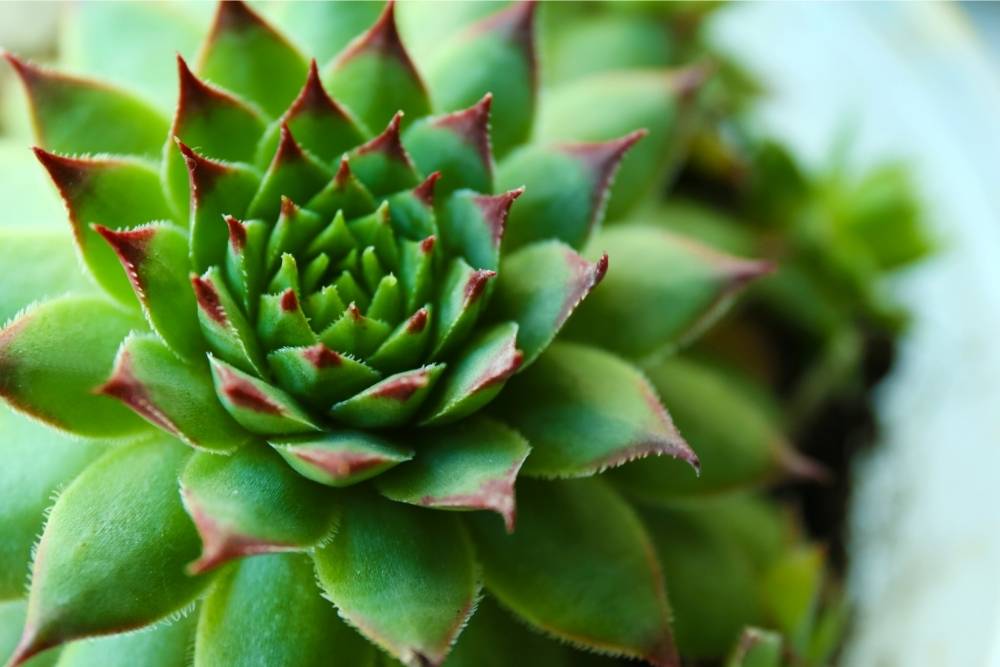
Do Succulents Need Direct Sun?
Succulents do not need direct sunlight, but most succulents prefer direct sun whenever possible. Unlike plants that get burned or scorched from the direct sun, succulents crave this environment. They will even start to reach toward the light, making them grow lopsided if not rotated.
How Much Sun Do Succulents Need Daily?
Succulent plants should get about six hours of bright sunlight every day. Pick a location in your home that gets a lot of natural light during the daytime, putting the succulent directly in front of a sunny window.
Many people’s homes do not have enough bright light for enough hours to please some types of succulents. You should always check each succulent species’ specific sunlight needs before adding one to your home.
You might also need to move your succulent to different home areas throughout the day if possible. This will allow the succulent to soak up as much direct sunlight as possible.
Can Succulents Grow Without Sun?
Yes! Most succulent plants’ natural environments are deserts with dry, arid climates. Because of this, succulents enjoy a lot of sun, sometimes without any shade at all. This is why so many species of succulents thrive in direct sunlight.
Can Succulents Grow Inside Without Sun?
Indoor succulents can survive without the sun, especially if there is another light source. If you don’t have any sunlight in your home, consider a succulent type that doesn’t require full sun. Some indoor plants can thrive in low light with the right care.
Aloe Aristata
This compact succulent has thick, fleshy leaves that store water for a very long time. This plant requires very little sun and very little water, making it quite low maintenance while offering a very distinct look.
Snake Plant
Also known as Mother-In-Law’s Tongue, this plant is famous for being resilient and flourishing in just about any environment. The light level won’t stop the Snake Plant from having striking, straight-up dark green leaves. Snake Plants are known for cleansing the air every night, another benefit to keeping this exotic succulent around.
Jade Plant
The Jade Plant is also known as the Money Tree or Lucky Plant and is said to bless homes with good fortune. With rounded leaves and little tree trunks, this beautiful plant can inspire good energy and positivity in any room, regardless of light.
Gasteria
This plant needs sun protection to avoid the leaves becoming discolored. The leaves are long with a rough texture, coming in various colors and partners that brighten up any dim room. Native to South Africa, Gasteria is rare but worth seeking out if you live somewhere darker.
Ponytail Palm
With sproingy, small leaves sprouting out of a big, chunky trunk, the Ponytail Palm is one of the most unique succulents around. Its large trunk stores water, meaning it doesn’t need much watering to thrive. The Ponytail Palm can grow up to four feet, even without an abundance of full sun.
What Happens If My Succulent Doesn’t Get Enough Sun?
Without enough light, some succulent species will start to show signs of needing more light. Here are some signs that your succulent is not getting enough light.
- Lopsided: If your succulent isn’t getting enough light, they will often start reaching for the nearest light source. This will make your plant a bit lopsided as it starts growing in one direction.
- Spindly: Succulents that aren’t getting enough light will often elongate. They will take on a “leggy” appearance, usually looking a bit unsightly and disproportionate.
- Flattened Leaves: If your plant is not getting enough of the sun’s rays, it will often start to flatten. This allows more parts of the leaves to become exposed to the light source. You’ll see flattened rosette on some succulents growing indoors without enough light.
- Fading Color: A light-deprived succulent that’s not getting as much light as it should often become a bit faded in color. This is a sign that your plant is under stress. A washed-out or pasty succulent needs some help!
What Happens If A Succulent Gets Too Much Sun?
Here is where things can get a bit tricky, at least on paper. Succulents enjoy full sun, but only for a certain timeframe. If your succulent gets too much sun, they can become distressed. You’ll notice your succulent leaves getting damaged in the form of pale spots.
Are Succulents Better In Sun or In Shade?
The sun, of course! Despite too much sun causing a bit of damage to some succulents, you should try to give your succulent four to six hours of direct sunlight every day. This can either be in an outdoor garden or inside a sunny room.
Can A Plant Recover If It Doesn’t Receive Enough Sunlight?
Yes! Succulents are hardy plants that can survive in most situations. If you make some changes to your succulent’s environment, they can completely come back and recover from being in a too-shady room. Here is what you can do to help your succulent heal:
- Pick a west or south-facing windowsill for the majority of the year, allowing your succulent to get as much light as possible. Switch to an east-facing window in the summer during the sunniest days.
- You can also try placing your succulent outside during the summer. You’ll see faded color turn back to its former glory over time.
- Make sure your succulent is in well-draining soil. The pot should have enough room for the succulent’s roots to spread.
- Don’t overwater your succulent in a panic. This can drown your plant. Only water you’re succulent when the soil is completely dry.
- Keep your succulent in a warm room without any drafts. For example, don’t put your succulent near a door that continuously opens, especially if it’s cold out.
- If your succulent seems beyond saving, take off a healthy leaf. This can be propagated to grow an entirely new succulent. Put this succulent in a different pot with well-draining soil and a sunny area of the home.
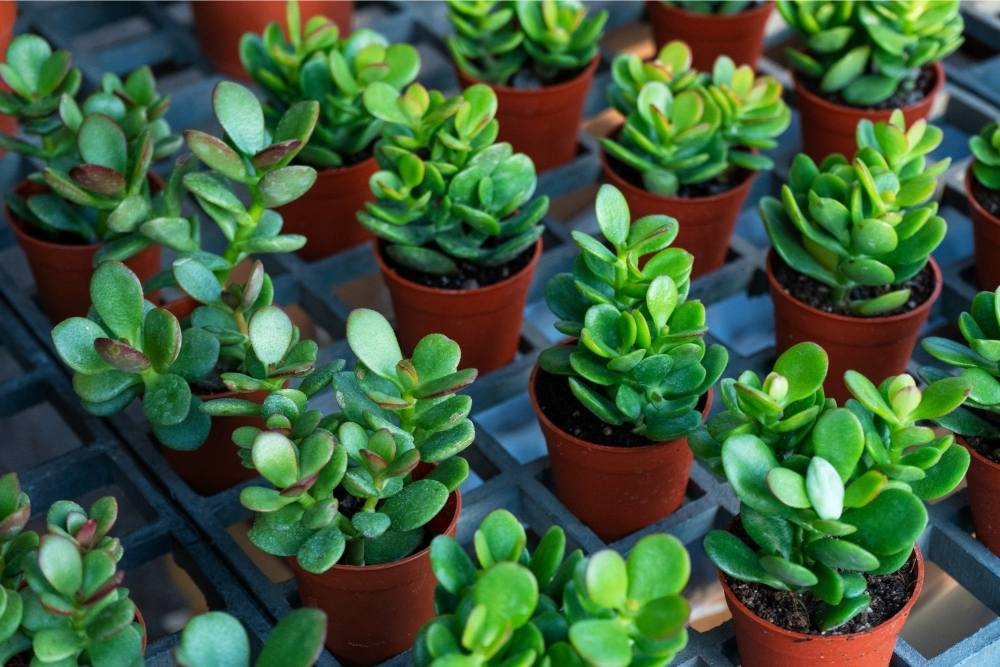
How to Propagate a Succulent
The first step to propagating a succulent is removing a leaf. Gently twist a leaf off of the stem, making sure it’s a clean pull that doesn’t take a lot of the stem with it. A leaf broken off just before the stem will likely die.
You can also take a cutting. You’ll need sharp scissors or pruning shears. Make sure your equipment of choice is clean and sterilized. Cut off a succulent piece just above a leaf on the stem. You can also cut off the top of the succulent if it’s healthy.
Let it dry out a bit once you’ve taken your cutting or leaf. You will most likely need to leave it be for up to three days. You’ll see it start to scab over. You want the cutting or leaf to scab over or absorb too much water, resulting in it drowning.
You’ll see the piece of the succulent start to shrivel. At that point, it’s time to water it. Unlike a succulent, you’ll need to water this piece of the plant every day. But you don’t want to overwater them, or they will turn an orange-brown and die.
If you are using a succulent leaf, put it on top of the soil at this point. Don’t let the ends touch the soil at all when the soil dries out; water it. Use a spray bottle to get the top of the soil wet. Unlike leaves, cuttings should be put into the soil. In a few weeks, you’ll notice roots.
Propagation takes patience. New rosettes or leaves will take some time to form from the leaf or cutting. The amount of time will depend on the time of year, the temperature, the humidity, and the type of succulent you’re propagating. When the succulent finally grows, make sure that the roots are covered in soil.
Final Thoughts – Do Succulents Need Sun
As you can see, succulents are quite simple to care for. Even if you live in a home without many suns, you can find ways to successfully grow all kinds of exotic, beautiful succulents. Just remember to keep your succulent environment warm, provide them with an alternative light source, and don’t overwater them.
Succulents are very hardy and versatile plants. Even if your succulent isn’t getting enough sun, there are luckily ways to improve their appearance and health. And if your home is on the darker side, keep some of these low-light succulents in mind. Jade Plants, Snake Plants, and Ponytail Palms are still glorious to look at but won’t need as much light as some other species.


